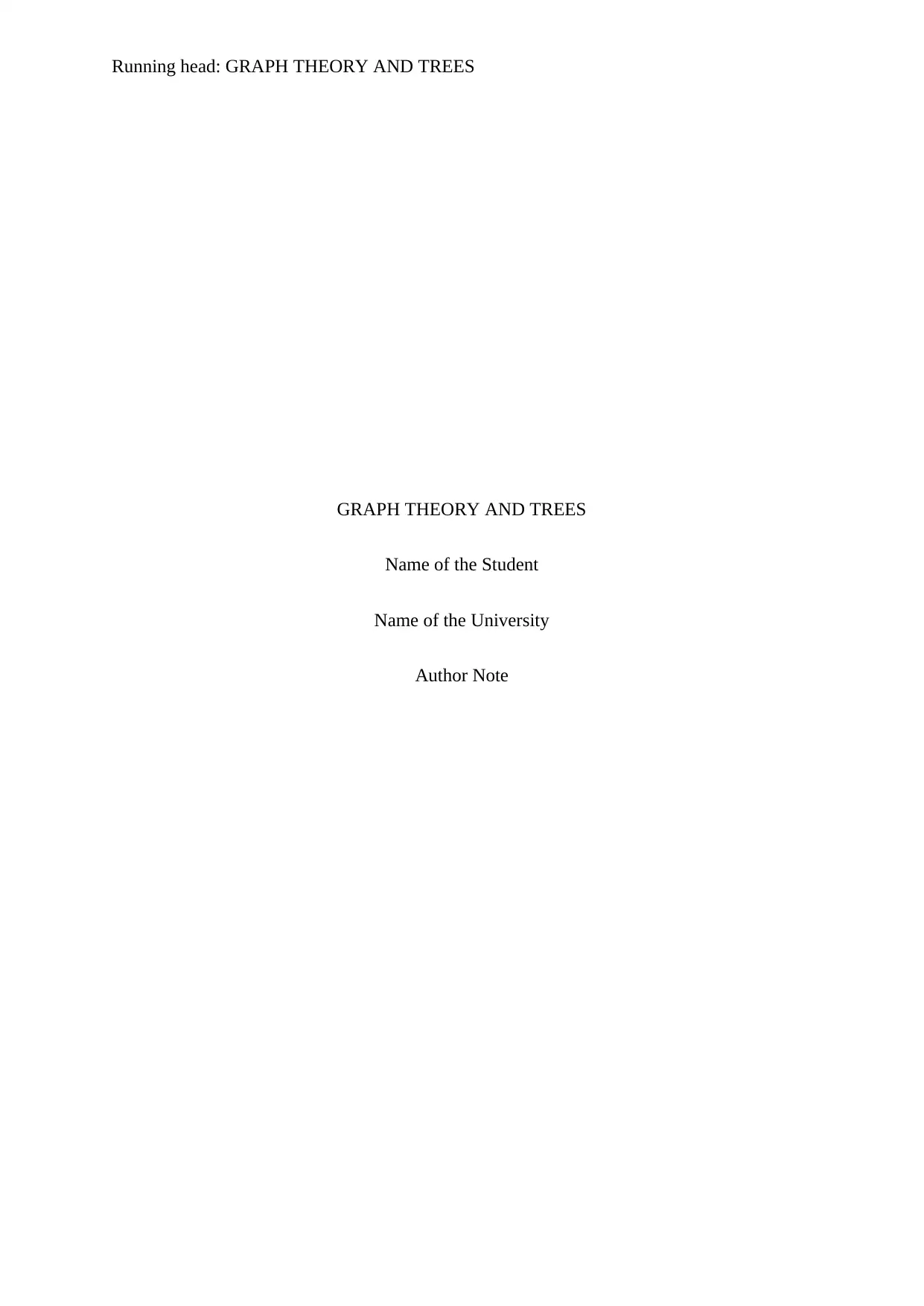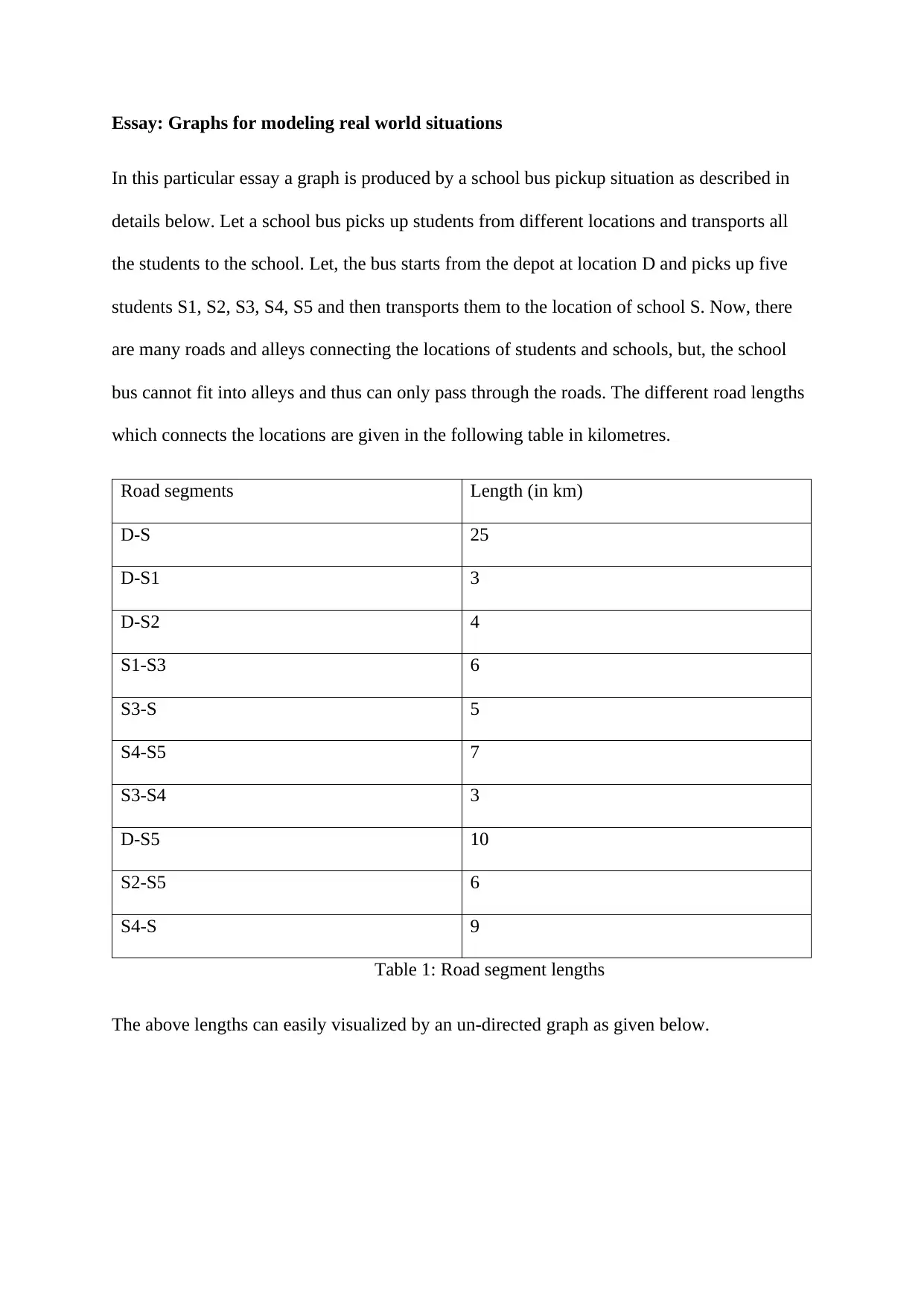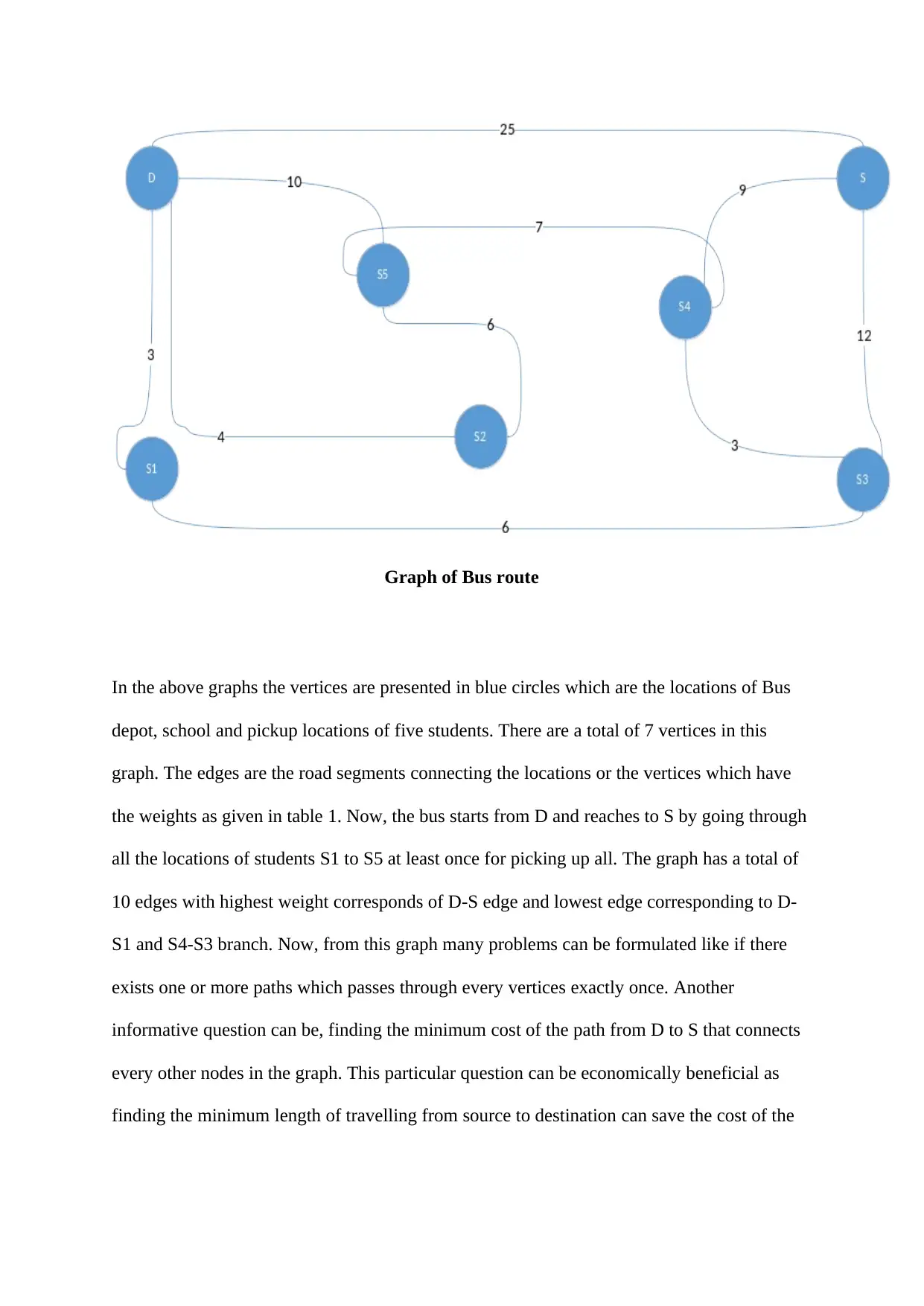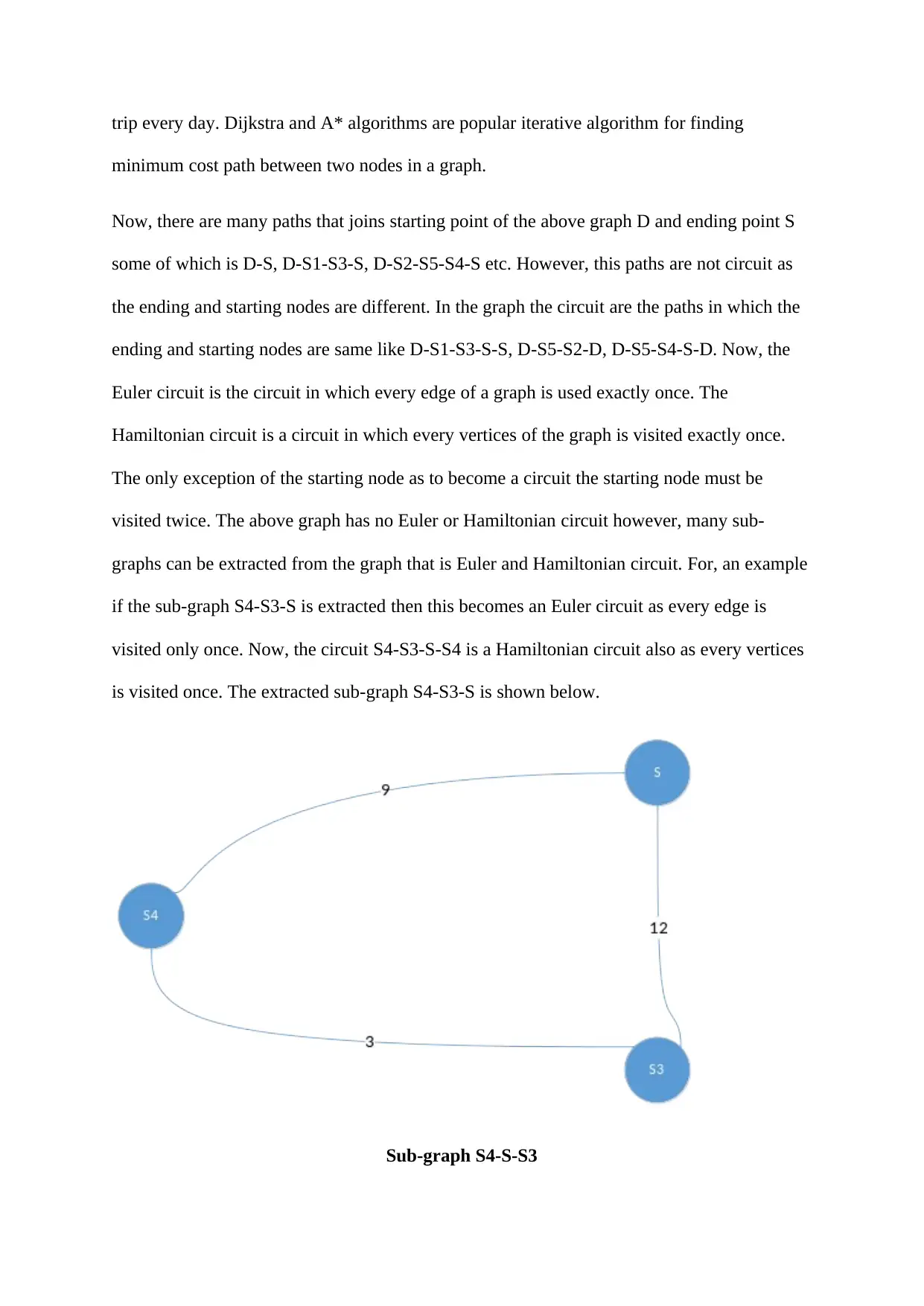University Essay: Analyzing Graph Theory in School Bus Route
VerifiedAdded on 2022/09/07
|4
|626
|17
Essay
AI Summary
This essay provides a comprehensive analysis of graph theory, employing a school bus pickup scenario to illustrate its practical applications. The essay begins by describing a real-world situation involving a school bus picking up students from various locations and transporting them to school. This scenario is then modeled using an undirected graph, where vertices represent locations (depot, school, student pickup points) and edges represent road segments connecting these locations, with associated lengths. The essay details the construction of the graph, including the identification of vertices and edges, and the assignment of weights to the edges based on road segment lengths. It then formulates problems that can be addressed using graph theory, such as finding paths that visit all vertices and determining the minimum cost path. The essay introduces key concepts like Dijkstra's algorithm for finding minimum cost paths, as well as Euler and Hamiltonian circuits. It also demonstrates how sub-graphs can be extracted from the main graph to form Euler and Hamiltonian circuits, providing examples of these circuits within the context of the school bus route. The essay concludes by highlighting the economic benefits of finding the minimum path length to save costs.
1 out of 4





![[object Object]](/_next/static/media/star-bottom.7253800d.svg)